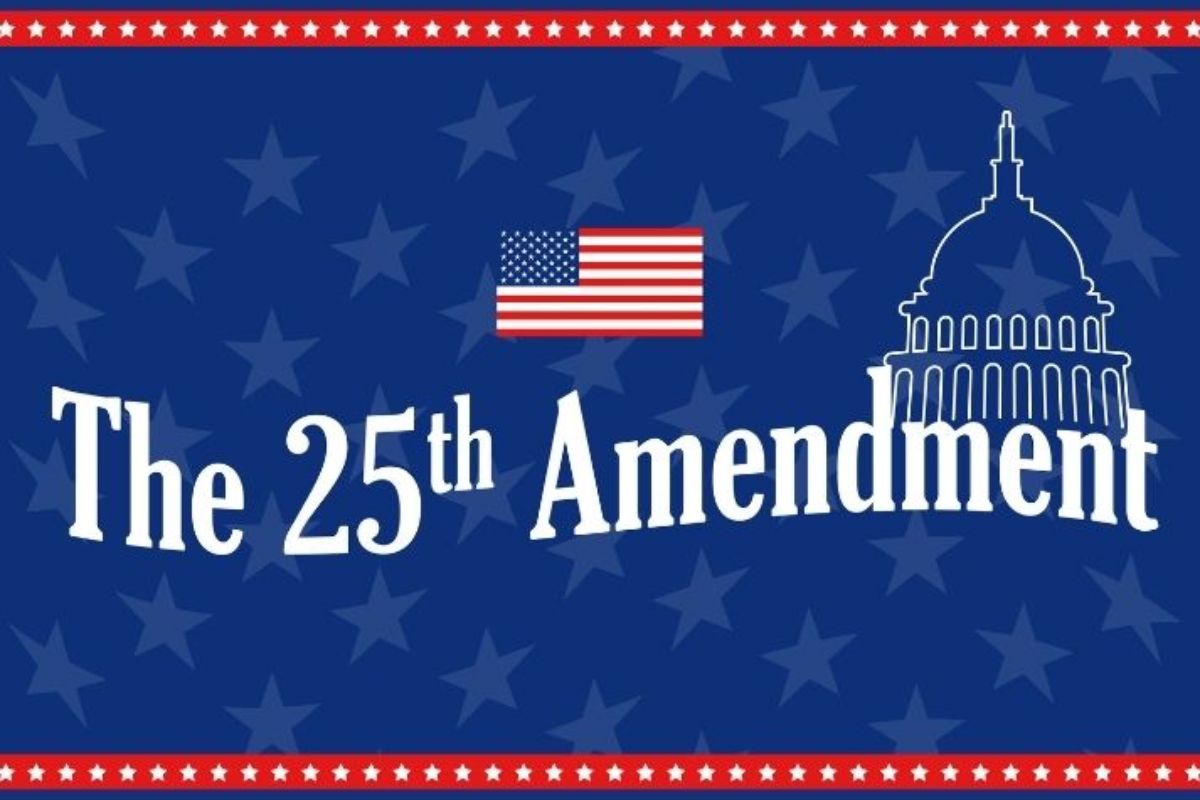
Ever wondered what happens if a U.S. President can't do their job? The 25th Amendment has the answers. This part of the Constitution explains who takes over if the President is sick, hurt, or otherwise unable to serve. It also covers what happens if the Vice President's seat becomes empty. Understanding these rules helps us see how the government stays stable during tough times. From its history to key sections, we'll break down 43 facts about the 25th Amendment. Get ready to learn how this important amendment keeps our nation's leadership on track!
What is the 25th Amendment?
The 25th Amendment to the United States Constitution addresses presidential succession and disability. It ensures a clear line of authority if the President becomes unable to perform duties. Here are some intriguing facts about this important amendment.
- The 25th Amendment was ratified on February 10, 1967.
- It consists of four sections detailing different scenarios of presidential incapacity and succession.
- The amendment was proposed after the assassination of President John F. Kennedy in 1963.
- It clarifies the Vice President's role if the President is unable to serve.
- The amendment was first used in 1973 when Vice President Spiro Agnew resigned.
- President Richard Nixon nominated Gerald Ford as Vice President under the 25th Amendment.
- Section 1 states that the Vice President becomes President if the President dies, resigns, or is removed.
- Section 2 allows the President to nominate a new Vice President if the position becomes vacant.
- Both houses of Congress must confirm the new Vice President by a majority vote.
- Section 3 lets the President declare themselves unable to perform duties, temporarily transferring power to the Vice President.
- This declaration must be in writing to the President pro tempore of the Senate and the Speaker of the House.
- Section 4 deals with situations where the President cannot or will not declare incapacity.
- The Vice President and a majority of the Cabinet can declare the President incapacitated under Section 4.
- If the President disputes this declaration, Congress decides the issue.
- A two-thirds vote in both houses of Congress is required to keep the Vice President in power if the President contests the declaration.
- The amendment was invoked in 1985 when President Ronald Reagan underwent surgery.
- Vice President George H.W. Bush became Acting President during Reagan's surgery.
- It was also used in 2002 and 2007 when President George W. Bush underwent medical procedures.
- Vice President Dick Cheney served as Acting President during Bush's medical procedures.
- The amendment ensures continuity of government during times of crisis.
- It provides a legal framework for addressing presidential disability.
- The amendment was designed to prevent confusion and power struggles.
- It reflects lessons learned from past presidential incapacities.
- President Woodrow Wilson's stroke in 1919 highlighted the need for such an amendment.
- The amendment was a response to the lack of clarity in the original Constitution.
- It was part of a broader effort to modernize the Constitution in the 1960s.
- The amendment has been praised for its clarity and effectiveness.
- Some critics argue it gives too much power to the Vice President and Cabinet.
- The amendment has never been used to permanently remove a President from office.
- It has been invoked temporarily several times for medical reasons.
- The amendment's provisions have been tested but never fully challenged in court.
- It remains a crucial part of the constitutional framework.
- The amendment reflects the principle of checks and balances.
- It ensures that no single person has unchecked power.
- The amendment is an example of constitutional adaptability.
- It shows how the Constitution can evolve to meet new challenges.
- The amendment has been studied by scholars and legal experts.
- It is often cited in discussions of presidential power and succession.
- The amendment is a key part of American political history.
- It has influenced discussions of presidential succession in other countries.
- The amendment is a testament to the resilience of the American political system.
- It underscores the importance of clear rules and procedures in government.
- The amendment continues to be relevant in contemporary political debates.
The 25th Amendment's Lasting Impact
The 25th Amendment has played a crucial role in maintaining the stability of the U.S. government. It provides clear guidelines for presidential succession and handling situations where the president is unable to perform duties. This amendment ensures a smooth transition of power, preventing potential chaos during times of crisis.
Understanding the 25th Amendment helps citizens appreciate the foresight of the framers of the Constitution. It highlights the importance of having a robust system in place to address unforeseen circumstances. The amendment has been invoked several times, proving its relevance and necessity.
By knowing these facts, we gain a deeper appreciation for the mechanisms that keep our government functioning effectively. The 25th Amendment stands as a testament to the resilience and adaptability of the U.S. Constitution, ensuring the continuity of leadership and the stability of the nation.
Was this page helpful?
Our commitment to delivering trustworthy and engaging content is at the heart of what we do. Each fact on our site is contributed by real users like you, bringing a wealth of diverse insights and information. To ensure the highest standards of accuracy and reliability, our dedicated editors meticulously review each submission. This process guarantees that the facts we share are not only fascinating but also credible. Trust in our commitment to quality and authenticity as you explore and learn with us.
